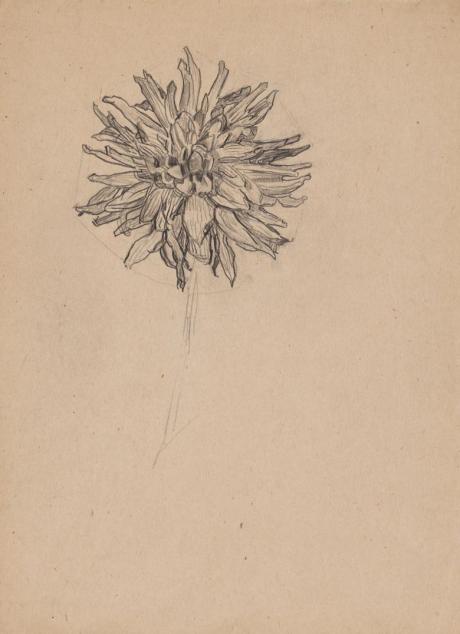Well the Missus and I trundled over to The Fens the other day to catch Mondrian: Foundations at the Museum of Fine Arts (through April 28) and say, it was swell.
In the years around 1900, before Piet Mondrian (1872–1944) created some of the most recognizable abstract canvases of the last century, he turned his eye to the characteristic sights of the Dutch landscape: canals, windmills, fields, flowers, and trees. Mondrian’s earlier and lesser-known works reveal a restless and experimental artist who constantly reinvented himself, absorbing new influences and moving away from conventions of representation.
“Mondrian: Foundations” presents 28 paintings and works on paper, primarily from Mondrian’s early career, that trace the artist’s explorations as he progressed from realistic traditions to experimental abstractions . . . [The] early works show many affinities with his later abstractions: a strength of intuition and precision, an emphasis on the structure of natural forms, and innate feeling for rhythm and dynamism. Visitors can trace Mondrian’s journey toward abstraction and consider this icon of 20th-century modernism through a new lens.
According to a press release that appeared in some local newspapers (like The Boston Sun) but, oddly, not on the MFA’s Press page, “[a] majority of the works in Mondrian: Foundations are drawn from a gift to the MFA from Maria and Conrad Janis by and through the Janis Living Trust,”
In addition to 34 paintings, drawings and watercolors by Mondrian—24 of which are on view in the exhibition—the gift included more than 200 works that significantly reshape the Museum’s holdings of early and mid-20th century art from Europe and the U.S. Highlights include a group of five sculptures by Jean Arp that enable the MFA to show the full chronological range of his work; works on paper by Fernand Léger, Alberto Giacometti, Paul Klee, Pablo Picasso and Franz Kline; the Museum’s first work by Anna Mary Moses (“Grandma Moses”); and a group of seven works by the self-taught artist Morris Hirshfield.
Let’s hope we see most of those works on display sooner rather than later. Meanwhile, here’s some of what appears in the Mondrian exhibit.
It wasn’t much of a leap from that last charcoal drawing to the Mondrian we’ve all come to know and, in some cases, wear.
As we moved through the exhibit, the Missus noticed how Mondrian signed his early work.
So when did the Dutch Disrupter go One-A? A piece in Artsper Magazine fills in the blank.
Mondrian has experimented with his name almost as much as his artistic style. Like his forms, Mondrian reduced his name from Pieter Cornelius Mondriaan to Mondrian, distancing himself from his Dutch roots. Although still occasionally referred to as “Mondriaan,” the artist officially dropped the second “a” from his name in 1911, rendering it a very appropriate anagram; “I Paint Modern.”
Piet Mondrian most certainly did. And the MFA exhibit is well worth a trundle to see how it all started.








Now that the ‘season’ is ending, most certainly will trundle off to see this due to your enticing descriptions. Memories of YSL Vogue patterns back in the day !
Best to you and ‘the Missus’ on birdday and beyond.
Thanks, C – right back atcha. All best as always.